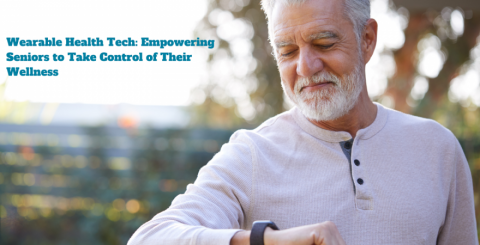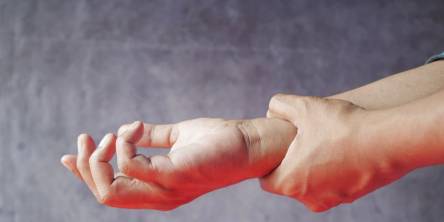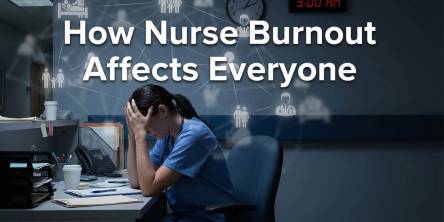Wearable Health Tech: Empowering Seniors to Take Control of Their Wellness

Wearable tech has revolutionized senior health and wellness! Things like fitness trackers and medical alert devices are giving seniors new ways to take charge of their health. With the increasing number of baby boomers entering old age, wearable health technology becomes crucial in helping them maintain fitness, safety, and independence. It improves their quality of life and reduces medical costs too.
Monitoring Vital Signs for Early Detection
Some wearables let seniors keep constant tabs on vital health statistics like heart rate, blood pressure, breathing rate, and blood oxygen levels. Devices like Apple Watches and Fitbits provide 24/7 heart monitoring and can detect irregular heartbeats or signs of atrial fibrillation. Some fitness trackers are even FDA-approved for medical use in spotting heart issues.
This real-time tracking allows early detection of serious conditions before they become emergencies. One study found using wearables for health monitoring reduces hospital admissions by 30% and ER visits by 20% for seniors.
Read more: 6 Tips for Taking Care of Seniors in the Summer
By identifying small changes in vitals daily, doctors can take preventive steps to stabilize conditions early. Try to find a primary care doctor who allows matching with providers fully versed in leveraging wearables for better health outcomes. Instead of reacting to emergencies, they can intervene proactively. Research has shown that this approach improves seniors' health.
Some insightful statistics on the impact of continuous vital sign monitoring:
-
In surveys, 85% of American seniors say they're interested in using wearables to track their health. Seeing those constant vitals gives peace of mind.
-
Research shows wearables spot 82% more cases of irregular heart rhythm compared to periodic doctor visits. More monitoring means risks get identified sooner.
-
Studies found popular fitness wristbands provide blood pressure readings accurate within 5mmHg of medical cuffs. Tapping BP all day is super helpful.
-
Tracking respiration rate in real-time lets doctors diagnose lung issues like COPD, pneumonia, or sleep apnea earlier - all common in older people.
-
Pulse ox sensors in wearables can show dropping oxygen levels days before someone feels short of breath or flu symptoms come on.
With extended monitoring of vitals keeps seniors and doctors proactive. It enables earlier diagnosis, faster treatment of issues, and prevention of serious complications.
Encouraging Physical Activity for Active Aging
Fitness trackers effectively motivate seniors to stay active. They give personalized fitness goals, count steps and calories, and check heart rate during workouts. Studies show seniors who use them increase regular exercise by 30%.
Research in JMIR Aging found that wearables helped older adults reduce sedentary time by 26 minutes per day. By making activity monitoring simple and convenient, these devices encourage seniors to stay active. Here are some insightful statistics on encouraging activity with wearables:
-
Seniors with fitness trackers average 1,500 more daily steps compared to non-users.
-
Seniors who meet step goals have up to 30% lower rates of obesity, heart disease, and diabetes.
-
Fitness trackers helped older adults achieve recommended activity levels by 27%.
Medication Management for Adherence
Remembering to take medications on time can be challenging for seniors dealing with complex regimens. Yet, medication non-adherence leads to worse health outcomes and increased hospitalization risk. This issue costs the U.S. healthcare system over $100 billion annually. Wearables integrated with medication reminders and tracking help address this problem.
Studies show that such devices can improve medication adherence by up to 30% in the elderly. Features like reminder alerts, dosage tracking logs, and pill dispensers simplify management and give seniors greater independence over their health.
Vital stats on improving adherence with wearables:
-
25% of seniors take 5 or more prescription drugs daily. Medication reminders are essential.
-
Seniors who relied on wearable reminders took medications on schedule over 93% of the time.
-
Medication non-adherence is linked to 125,000 deaths yearly in the U.S. Proper adherence can reduce these statistics.
Detecting Falls for Faster Emergency Response
Falls are the leading cause of injury-related deaths in seniors. But wearables with automatic fall detection provide a safety net for older adults. These devices use sensors to identify falls and can immediately alert emergency contacts or call for help when one occurs. This expedites emergency response, getting seniors timely medical attention following accidents at home.
Per Health Affairs, fall detection wearables can decrease emergency response times by 50%. And since outcomes improve when treatment occurs within an hour of a fall, this rapid help saves lives.
Insightful data points on fall detection technology:
-
1 in 4 seniors fall in the U.S., with over 37 million falls reported each year.
-
Wearables detect falls with over 90% accuracy, outperforming stationary detectors.
-
Automated fall alerts enable emergency responders to arrive 29% faster compared to contact for help.
Embracing Technology for Health Independence
It's true new tech can seem intimidating to seniors sometimes. But modern wearables make it super simple! Their design prioritizes ease-of-use for older adults. You'll find touch screens, voice commands, intuitive interfaces, and readable displays on health wearables now. These features make the devices accessible.
With adult children often living far away, wearable tech enables seniors to live independently at home while staying connected to family. Senior centers offer classes to become comfortable using the gear too.
So, there's no need to fear the new technology! Wearables designed for seniors make it achievable for everyone to keep tabs on their health and stay active. These devices give older adults more control and peace of mind.
Frequently Asked Questions
How secure is the data collected by these wearable devices?
Reputable health wearable companies use encryption, two-factor authentication, and other security measures. Seniors must examine privacy policies before sharing health information. Devices that are HIPAA compliant offer the highest level of health data security.
What health conditions can wearables track?
Wearables excel at tracking vitals, fitness, falls, medication routines, sleep patterns, and more. However, they have limitations in diagnosing medical conditions or monitoring pre-existing diseases. Users should share recorded data with doctors to get clinical insights. Wearables complement medical care rather than replace it.
Are wearable health devices senior-friendly?
Yes, modern wearables focus on simplicity in design through features like touch screens, speaking commands, high-contrast displays, and intuitive menus. Many also connect to smartphones, allowing caregivers and family to access data. Training is available, but most seniors grasp how to use wearable tech.
Conclusion
The bottom line is wearable health tech lets seniors take charge of their well-being. Monitoring vitals spot issues early. Fitness trackers get older adults moving more. Medication reminders improve compliance. Fall detection gets help in emergencies.
As baby boomers get more tech-comfortable, wearables will be key for empowering their health and independence as they age. The future looks bright for seniors using this technology.
Similar Articles
Most people think health problems start suddenly. One day you feel fine, the next day something is wrong. In reality, most health issues develop slowly .They grow quietly in the background while life keeps moving.
The start of a new year is a natural time to pause, reflect, and think about how you want to feel in the months ahead. For those over 60, a fresh start does not mean setting unrealistic resolutions or making drastic changes.
Picture this: You're parked at your workspace, battling to focus on what should be a straightforward five-minute task. That afternoon slump? It's demolishing you today.
Joint pain and arthritis are common health issues that tend to become more intense during the winter season
Discover the benefits, challenges, and future of locum medical jobs. Learn how locum recruitment agencies support flexible, diverse career opportunities for healthcare professionals seeking dynamic work environments.
Burnout in the healthcare environment is a significant and growing crisis.
NAD+ therapy restores cellular energy, enhances metabolism, and promotes anti-aging by supporting DNA repair and improved overall vitality.
Seasonal Affective Disorder (SAD) is a type of depression linked to seasonal changes, most commonly seen during the late fall and winter months when sunlight exposure decreases
Enhance sleep comfort and support with a mattress topper queen. Discover how the right topper improves pressure relief, temperature control, and rest.









